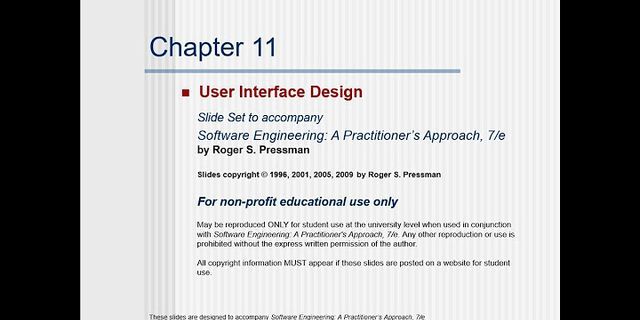 Show Sama seperti video, suara datang dalam banyak rasa. Sama seperti video, file suara dapat memiliki resolusi, bit-rate, dan codec yang berbeda. Untuk konfigurasi high-end surround-sound di luar 5.1, codec audio penting secara signifikan. Itu menentukan berapa banyak penutur dapat digunakan dan bagaimana penutur itu berorientasi pada pendengar. Codec yang berbeda, seperti Dobly Atmos dan DTS: X, memiliki kemampuan surround-sound yang berbeda, mendukung berbagai jenis perangkat keras yang digunakan dalam sistem home theater kelas atas. Apa Itu Dolby Atmos?Dolby Atmos adalah standar surround-sound yang menyediakan tahap surround-sound tiga dimensi. Suara datang tidak hanya dari depan, belakang dan samping, seperti dalam sistem dua dimensi tradisional, tetapi juga di atas. Ini menambahkan dimensi ketiga dari tahap suara aural. Dalam rekaman Dolby Atmos, insinyur suara dapat mengatur "ketinggian" asal suara yang tampak di ruang di sekitar penampil. Sebuah helikopter datang untuk pendaratan, tembakan senapan yang berdesing dekat telinga, bencana ledakan besar: semua efek mendapat manfaat sangat besar dari penambahan saluran audio overhead.  Atmos membutuhkan bahan sumber yang kompatibel, dimainkan melalui penerima yang kompatibel dengan Atmos dengan set speaker Atmos yang dikonfigurasi secara kompatibel. Sama seperti dengan suara surround dua dimensi, speaker Anda harus berada dalam posisi fisik yang logis untuk saluran suara yang terkait dengannya. Cobalah untuk menempatkan speaker atas langsung di atas kepala mungkin. Anda juga dapat menggunakan speaker Dolby Atmos yang dirancang untuk memotret suara langsung ke atas, sehingga memantulkan langit-langit dan suara seolah-olah berasal dari atas. Meskipun ini tidak dapat diandalkan seperti speaker yang dipasang di langit-langit, ini lebih efektif daripada yang seharusnya. Saat menggunakan nomenklatur sistem suara standar, sistem dengan tujuh speaker satelit dan satu subwoofer akan disebut sistem "7.1". Ketika speaker Atmos ditambahkan, mereka ditambahkan ke akhir steno sistem. Misalnya, sistem dengan tujuh pengeras suara satelit, satu subwoofer, dan empat pengeras suara Atmos akan ditunjukkan oleh "7.1.4." Faktanya, sistem 7.1.4 adalah pengaturan "referensi" Dolby Atmos, yang berarti bahwa ia beroperasi secara asli pada konfigurasi speaker itu. Itu juga dapat berjalan pada 5.1.2, 7.1.2, dan konfigurasi lain yang didukung khusus. Selain menunjukkan speaker dan standar, Dolby Atmos juga menjelaskan trek audio yang kompatibel dengan sistem Dolby Atmos. Jadi codec yang bekerja dengan speaker Dolby Atmos, itu sendiri, disebut audio Dolby Atmos. Apa itu DTS: X? DTS: X, seperti Dolby Atmos, adalah kategori codec audio yang digunakan untuk menyimpan dan transit data suara yang direkam. DTS: X tidak memiliki tempat tidur sistem suara yang ditentukan, artinya dapat berjalan pada sembarang campuran speaker. Ia menggunakan platform Multi-Dimensional Audio (MDA) bebas-royalti, sementara Atmos menggunakan sistem berpemilik. Ini membuat DTS: X sistem yang sedikit lebih terbuka daripada Atmos, tetapi yang biasanya tidak memiliki banyak dampak pada keberhasilan standar. Jika DTS: X tidak memiliki konfigurasi speaker referensi, untuk apa para insinyur bercampur? Pertama, penerima DTS: X menjalankan rutin kalibrasi. Ini secara otomatis mendeteksi lokasi dan posisi relatif dari speaker yang terhubung. Ini termasuk speaker yang dipasang di langit-langit, fitur baru untuk keluarga DTS codec. Dengan laporan mandiri ini, DTS: X kemudian dapat menerjemahkan input audio menjadi output audio yang cocok. DTS: X menerjemahkan titik asal yang diinginkan dalam ruang tiga dimensi ke dalam rangkaian sinyal khusus untuk speaker Anda. Codec dapat menempatkan suara sangat, sangat dekat dengan lokasi yang dituju dengan hampir semua konfigurasi speaker. Fleksibilitas yang lebih besar ini membuat pengaturan pengguna lebih mudah. Ini juga berarti bahwa teknisi suara tidak dapat menempatkan audio dengan andal dalam campuran. Karena tidak ada sistem referensi, penempatan harus kurang direproduksi. Apakah Dolby Atmos atau DTS: X Lebih Baik?Teater film secara luas menggunakan Dolby Atmos. Bioskop belum mengadopsi DTS: X pada tingkat yang sama. Ini mungkin berkat entri tempat standar kedua ke pasar suara tiga dimensi. Koneksi pasar Dolby yang ada juga menjadikan Atmos produk yang mudah dijual ke bioskop. DTS: X dapat dikodekan dengan bitrate maksimum yang lebih tinggi daripada Dolby Atmos. Tapi itu tidak membuat DTS: X benar-benar lebih baik. Dalam tes audio, sedikit jika ada pendengar yang mampu memastikan perbedaan antara kedua codec. Pada kenyataannya, perbedaan dalam kualitas suara kemungkinan minimal. DTS: X secara teoritis dapat menyandikan audio yang secara matematis lebih akurat daripada Dolby Atmos. Namun, pendengar kemungkinan tidak akan mampu membedakan perbedaan. Dolby Atmos menghasilkan file yang lebih kecil dengan codec kompresibel yang lebih efisien, yang berarti lebih banyak data dapat dimuat pada disk. Jika Anda tidak bisa membedakannya, apakah kompresi itu penting? Itulah pertanyaan yang berusaha dijawab oleh komunitas surround-sound. Dolby Atmos memang memiliki satu kaki di DTS: X – kompatibilitas yang lebih luas. Pengguna Dolby Atmos bisa mendapatkan audio yang kompatibel dari Netflix, Amazon Video Utama, iTunes, Vudu, dan sebagian besar rilis Blu-Ray. DTS: X, di sisi lain, hanya ditawarkan pada rilis yang ditentukan. Ada beberapa biaya dalam memilih tambahan baru ke pasar. Apakah artikel ini bermanfaat? ya Tidak Premium WordPress Themes Download Download Premium WordPress Themes Free Download Best WordPress Themes Free Download Download Nulled WordPress Themes ZG93bmxvYWQgbHluZGEgY291cnNlIGZyZWU= download micromax firmware Download WordPress Themes
As home cinema has improved, new surround sound formats have sprung up, bringing more detail and realism to movie nights. But let's go back to basics and look at the two most popular surround sound formats: DTS and Dolby Digital. Both DTS and Dolby Digital are audio compression technologies, allowing moviemakers to record surround sound that can be reproduced in cinemas as well as homes. Both deliver spine-tingling multi-channel sound, so what's the difference? And which is better? The devil is in the detail. Or, more accurately, the way that the two technologies encode audio. DTS is encoded at a higher bit-rate and therefore is considered by some experts to be better quality. Others argue that Dolby Digital's technology is more advanced and produces better sound quality at a lower bit-rate. Confused? The good news is that both are widely supported and chances are you won't have to play favourites. In their most basic form, both DTS and Dolby Digital support 5.1-channel audio (i.e. a typical home cinema system with five speakers and one subwoofer). And more advanced versions of the formats support 7.1-channels, HD surround sound and overhead speakers, in the form of DTS:X and Dolby Atmos. You'll find DTS and Dolby Digital in Blu-ray players, home cinema systems, games consoles, computers, set-top boxes and even smartphones. Read on to find out how DTS and Dolby Digital differ – and why it matters.  What is Dolby Digital?Dolby Digital is a multi-channel audio codec by Dolby Labs. It delivers a cinematic surround sound experience and is commonly referred to as the 'industry standard' (primarily because Dolby Labs has been around longer than DTS). The first film to use Dolby Digital was Batman Returns in 1992. Since then, Dolby has released a slew of increasingly advanced codecs, including Dolby Digital Plus, which supports HD surround sound and up to 7.1 speaker channels. Want the best? Dolby TrueHD is a lossless format that promises to be identical to the movie studio's master recording. Then there's the object-based audio system you'll no doubt have heard of – Dolby Atmos. What is DTS?DTS (originally Digital Theater Systems) was founded in 1993 to compete with Dolby Labs for surround sound supremacy. The company got its big break when Steven Spielberg chose DTS for his dino-romp, Jurassic Park. In 1996, DTS began cropping up in consumer hardware. The company might not be as well known as its main rival, but many purists believe that DTS offers better sound quality because it encodes audio at higher bit-rates. Like Dolby Digital, DTS has since released a plethora of more advanced surround sound formats including DTS-HD High Resolution, which supports up to 7.1 speaker channels. DTS has also brought out a lossless format, DTS-HD Master Audio. There is also DTS:X, which competes with Dolby's Atmos. What is the difference between DTS and Dolby Digital?Dolby Digital and DTS can both deliver fantastic surround sound experiences – but there are some key differences in the way that they achieve that end result. The major differences are the compression levels and bit-rates. Dolby Digital compresses 5.1 digital audio down to a bit-rate of 640 kbits/s (kilobits per second) for Blu-ray discs. For DVD discs, it supports a slightly lower bit-rate: up to 448 kbits/s. DTS, on the other hand, is less compressed and supports higher bit-rates of up to 1.5Mb/s (megabits per second). For DVD discs, it supports up to 768 kbits/s. The compression gap widens when you step up to the competing HD formats. Dolby Digital Plus supports up to 1.7Mbps, while DTS-HD High Resolution supports up to 6Mb/s. In theory, less compression during encoding equals more detailed audio that delivers a soundtrack closer to what was originally intended. Case closed, then? Not so fast. Dolby argues that its codecs are more efficient than DTS codecs, and thus can sound every bit as good or better, even at a lower bit-rate. Ultimately, you can expect a fine home cinema experience from both, and often your choice of soundtrack will come down to whichever is supported by your source material.  DTS:X vs Dolby AtmosThese top-of-the-line, cutting-edge home cinema audio technologies from Dolby and DTS are a step up from traditional surround sound. They recreate object-based effects, such as a plane flying overhead or bullets zinging around the room, thanks to multiple audio signals aimed at set-ups with a greater number of speakers than the standard 5.1. Again, both should create an immersive experience, but there are some crucial differences between the two. Dolby Atmos uses speakers placed in the ceiling to create a 'bubble' of sound. Not keen to cut holes in your ceiling? There's a range of simpler options, such as Dolby Atmos soundbars with upfiring drivers that bounce the sound off the ceiling to similar effect, or – better yet – upfiring modules that can sit on top of your traditional speakers. LG's OLED TVs over the past years also support Atmos, while the 2021 Panasonic JZ2000 4K OLED TV (and some of the company's older flagship TVs) has its own upward-firing Dolby Atmos speakers built into the rear of the set. You can find Dolby Atmos products from an increasing number of hardware manufacturers, as well as across Blu-ray discs and streaming services, including Amazon Prime Video, Netflix and Disney+. TV broadcasters such as Sky and BT are increasingly supporting Atmos, too. DTS:X is a bit more flexible. It works with standard surround sound set-ups and doesn't require extra overhead speakers. You can also manually adjust sound objects, meaning you can crank up the volume of voices on a soundtrack making it easier to hear dialogue over loud effects. Around 90 per cent of the home AV industry supports DTS:X, with many manufacturers either releasing firmware updates for existing receivers, or launching new models. The downside? It is less common; neither Amazon Prime Video nor Netflix currently support DTS:X.
Which is better: DTS or Dolby Digital?Based on the specs alone, DTS beats its rival with higher bit-rates that promise a more realistic movie experience. That said, other factors such as signal to noise ratio and speaker calibration mean that plenty of audiophiles would rate Dolby above DTS. With standards constantly evolving, the best way to upgrade your movie night is to ensure you have good-quality components, set up properly and fed the highest possible source material. That way, whether it's DTS:X or Dolby Atmos, you'll be treated to thrilling home cinema entertainment. MORE: The Best AV receivers, best speaker packages and best soundbars you can buy The best 4K movies and TV shows to watch and where to watch them 19 of the best film scenes to test surround sound |

Pos Terkait
Periklanan
BERITA TERKINI
Toplist Popular
#1
#2
#4
#5
#6
#7
Top 8 apa itu benedict dan biuret? 2022
1 years ago#8
#9
#10
Top 6 apa itu self pick up grabfood? 2022
2 years agoPeriklanan
Terpopuler
Periklanan
Tentang Kami
Dukungan

Copyright © 2024 toptenid.com Inc.


















